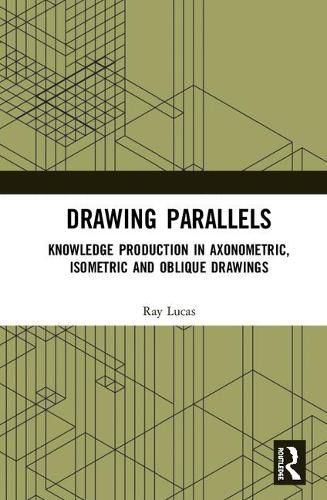Readings Newsletter
Become a Readings Member to make your shopping experience even easier.
Sign in or sign up for free!
You’re not far away from qualifying for FREE standard shipping within Australia
You’ve qualified for FREE standard shipping within Australia
The cart is loading…






Drawing Parallels expands your understanding of the workings of architects by looking at their work from an alternative perspective. The book focuses on parallel projections such as axonometric, isometric, and oblique drawings. Ray Lucas argues that by retracing the marks made by architects, we can begin to engage more directly with their practice as it is only by redrawing the work that hidden aspects are revealed. The practice of drawing offers significantly different insights, not easily accessible through discourse analysis, critical theory, or observation.
Using James Stirling, JJP Oud, Peter Eisenman, John Hejduk, and Cedric Price as case studies, Lucas highlights each architect’s creative practices which he anaylses with reference to Bergson’s concepts of temporality and cretivity, discussing ther manner in which creative problems are explored and solved. The book also draws on a range of anthropological ideas including skilled practice and enchantment in order to explore why axonometrics are important to architecture and questions the degree to which the drawing convention influences the forms produced by architects.
With 60 black-and-white images to illustrate design development, this book would be an essential read for academics and students of architecture with a particular interest in further understanding the inner workings of the architectural creative process.
$9.00 standard shipping within Australia
FREE standard shipping within Australia for orders over $100.00
Express & International shipping calculated at checkout
Drawing Parallels expands your understanding of the workings of architects by looking at their work from an alternative perspective. The book focuses on parallel projections such as axonometric, isometric, and oblique drawings. Ray Lucas argues that by retracing the marks made by architects, we can begin to engage more directly with their practice as it is only by redrawing the work that hidden aspects are revealed. The practice of drawing offers significantly different insights, not easily accessible through discourse analysis, critical theory, or observation.
Using James Stirling, JJP Oud, Peter Eisenman, John Hejduk, and Cedric Price as case studies, Lucas highlights each architect’s creative practices which he anaylses with reference to Bergson’s concepts of temporality and cretivity, discussing ther manner in which creative problems are explored and solved. The book also draws on a range of anthropological ideas including skilled practice and enchantment in order to explore why axonometrics are important to architecture and questions the degree to which the drawing convention influences the forms produced by architects.
With 60 black-and-white images to illustrate design development, this book would be an essential read for academics and students of architecture with a particular interest in further understanding the inner workings of the architectural creative process.